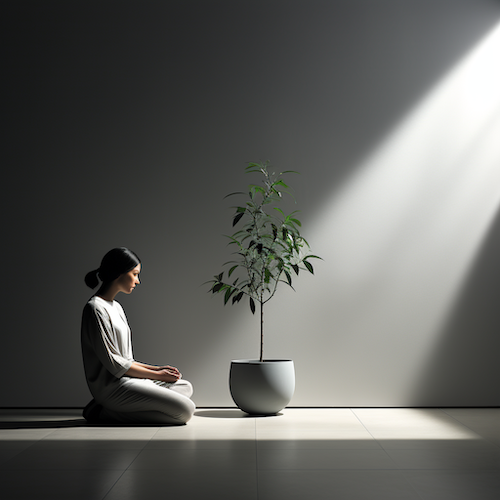As the clock ticks towards midnight this New Year’s Eve, a time when reflections and resolutions take center stage, my thoughts are swirling in a bittersweet dance. Yes, the year blessed me with cherished moments – the laughter of my daughters filling the air, the thrill of exploring new places four times over. Yet, amidst this mosaic of memories, there’s a shadow, a subtle, unspoken ache that lingers – ambiguous grief. It’s a feeling hard to articulate, like a whisper in the wind, there but not quite tangible. I won’t dive into the specifics, but let’s unravel this enigma together. Perhaps, you too have felt its elusive touch as one year folds into another.

Ambiguous grief is a journey through a landscape shrouded in fog, where the usual signposts of loss and recovery are obscured. Unlike the clear-cut sorrow of losing a loved one to death, ambiguous grief is the heartache of loss without closure. Imagine grappling with a loved one’s disappearance, living with someone lost in the depths of dementia, or the aching void left by a relationship that abruptly ends without explanation. It’s a psychological tightrope, balancing between presence and absence, where the loved one is neither fully here nor completely gone.
This type of grief plays tricks on the heart and mind. It manifests in a whirlwind of emotions – anger, confusion, depression, and a relentless yearning for answers. The unique pain of ambiguous grief lies in its lack of societal recognition; there are no rituals for the ‘not quite gone,’ no condolences for the ‘half lost.’ It’s a silent struggle, often borne alone.
But, in this murkiness, there is also a profound lesson in resilience. Coping with ambiguous grief requires a redefinition of hope and acceptance. It’s about finding support in unexpected places, be it through counseling, support groups, or shared stories. It’s about adjusting the lens through which we view loss and reassembling the pieces of a shattered reality into something new and meaningful.

Ambiguous grief, in all its complexity, speaks to a truth we often forget: that life, love, and loss are rarely black and white. It challenges us to navigate shades of gray, to find peace amidst the unresolved, and to embrace the strength that comes from weathering the unknown. In a world that craves certainty, ambiguous grief teaches us the power of living with uncertainty and the grace of letting go, even when we can’t quite say goodbye.
Before I bid farewell to 2023, I’m setting the stage for a transformative journey. Beginning tomorrow, I embark on a 21-Day Journaling Inner Adventure. It’s more than a resolution; it’s a commitment to self-exploration and growth. Join me on this journey to unlock new perspectives and embrace the power of reflection. Let’s turn the page together!



